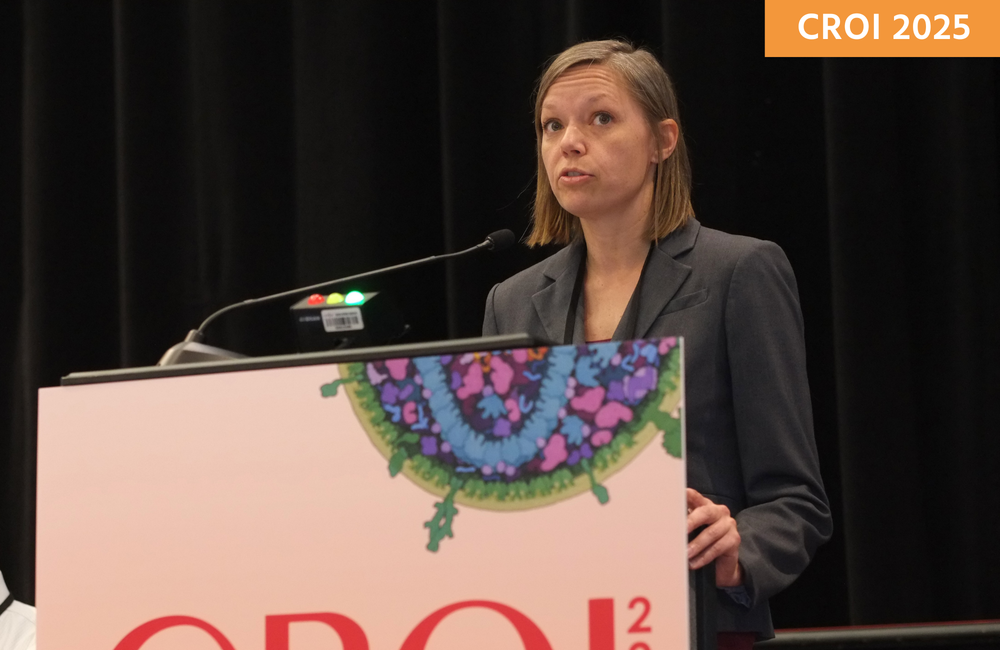
Injectable PrEP clearly works at least as well for cisgender women having vaginal sex as it does for people having anal sex. But there remains some uncertainty as to whether the much lower effectiveness of oral PrEP seen in most studies in women is entirely due to poorer adherence, or whether the way that oral PrEP moves through the body’s tissues also contributes.
These doubts continue to affect dosing recommendations for women using PrEP and have prevented event-driven or ‘on demand’ PrEP for women from being adopted in guidelines. One 2017 paper concluded that event-driven PrEP could not work for women.
However, a modelling study presented by Dr Mackenzie Cottrell of the University of North Carolina at last week's Conference on Retroviruses and Opportunistic Infections (CROI 2025), has found that, based on computer simulations of PrEP’s movement into and out of the female genital tract tissues, event-based dosing for women using tenofovir disoproxil / emtricitabine (TDF/FTC) may be effective. The model that generated these simulations related the level of TDF/FTC’s active molecules in female genital tissues for several different dosing scenarios to the level that is needed to protect cells from HIV in lab-based experiments.
The recommended on-demand dose of PrEP for people having anal sex is ‘2-1-1’: a double dose of TDF/FTC before sex, then if sex happens a single dose 24 hours after the first dose, and another 48 hours later. This had exactly the same efficacy in the IPERGAY study as daily PrEP did in the contemporaneous PROUD study.
However, because the level of PrEP’s active molecules is lower in the female genital tract than in the rectum and also fall more quickly below the level needed to protect cells from HIV, Cottrell and colleagues suggest that an optimised event-based dosing for women would include taking an extra pill 72 hours after sex, or ‘2-1-1-1’ dosing. This regimen, Cottrell concluded, would probably be more effective than ‘2-2-2’ dosing, though it involves taking one less pill.
She noted that her findings from modelling should be tested in a clinical trial.
In detail, the model predicts that for women taking standard 2-1-1 dosing, PrEP levels in the female genital tissues should remain high enough to prevent 80% of infections in women for five days after sex. However, by taking an extra pill (2-1-1-1 dosing), PrEP levels in female genital tissues should remain high enough to increase this to prevent 94% of infections in women for six days after sex, and 80% for seven days after sex.
Increasing the pill burden to a double dose on all four days (2-2-2-2 dosing) would only extend the 94% efficacy level by one more day.
The model posits what happens when just one event-driven regimen is taken, to protect against one possible exposure to HIV. While it is uncertain how many days after sex these PrEP levels need to persist to prevent infection, animal and modelling studies suggest it may be up to six days or possibly longer. Importantly, 2-1-1 TDF/FTC dosing sustains protective exposure in rectal tissue for more than 10 days after sex.
Cottrell told aidsmap that in the HPTN 083 study, for people in the oral PrEP arm, there was minimal difference in risk reduction between gay and bi men and trans women taking 2-3 doses a week, compared with those taking seven a week. In HPTN 084 however, 2-6 doses a week offered considerably less risk reduction for women than taking seven doses.
Cottrell’s model puts together two separate areas of study: pharmacokinetic studies that investigate PrEP levels reached in different tissues, and pharmacodynamic studies that show the levels of PrEP needed to prevent HIV infection in the cells present within tissues. By pairing these two areas of study the level of effectiveness offered by different doses and timings of TDF/FTC can be predicted.
Levels of both tenofovir and its metabolite (tenofovir diphosphate: i.e. the form cells convert it into when they absorb it) are 10-50 times lower in the female genital tract than in the rectum.
In the case of emtricitabine, its metabolite actually reaches 10-fold higher levels in the female genital tract than in the rectum. But whereas one model of how PrEP works (the Zhang model in this report) finds that intracellular levels of PrEP in cells located within tissues are less important than those in cells located in the blood, Cottrell disagrees with this.
She agrees with the previously mentioned 2017 paper in one key aspect: within cells, naturally occurring nucleotides similar to PrEP’s active molecules may compete with them, potentially reducing their intracellular efficacy. Therefore, models used to predict the effectiveness of event-driven dosing of oral PrEP should consider these nucleotides as did the one that Cottrell used in her study.
Cottrell told aidsmap that her model agreed with a recent study by Professor Jeanne Marrazzo that showed that taking 4-6 pills a week offered about 87% protection for women, but that taking seven protected 100% of women included in the study.
“I generally believe that PrEP protects 100% of women who use it perfectly every day,” she said. Based on her model’s predictions, taking a 2-1-1-1 regimen ‘on demand’ would come very close to that in women who might prefer it.
Dumond JB et al (presenter Cottrell ML). Optimizing on-demand tenofovir disoproxil fumarate/emtricitabine dosing in women for HIV prevention. Conference on Retroviruses and Opportunistic Infections, San Francisco, abstract 157, 2025.
View the abstract on the conference website.
Note: This article was corrected on 19 and 20 March 2025. The titles of the HPTN 083 and 084 studies had been transposed, and Dr Cottrell also suggested some amendments to better explain the study.

